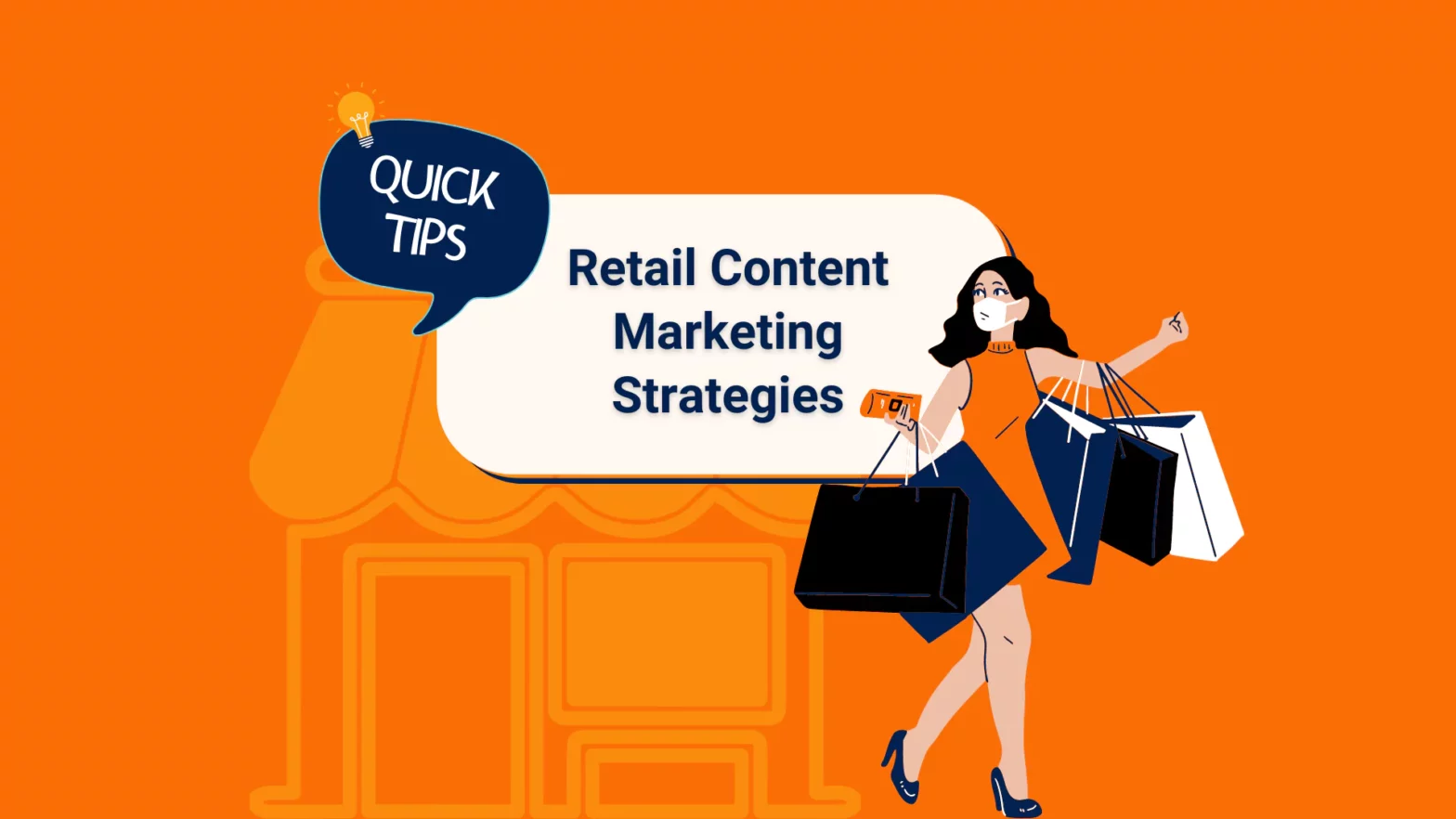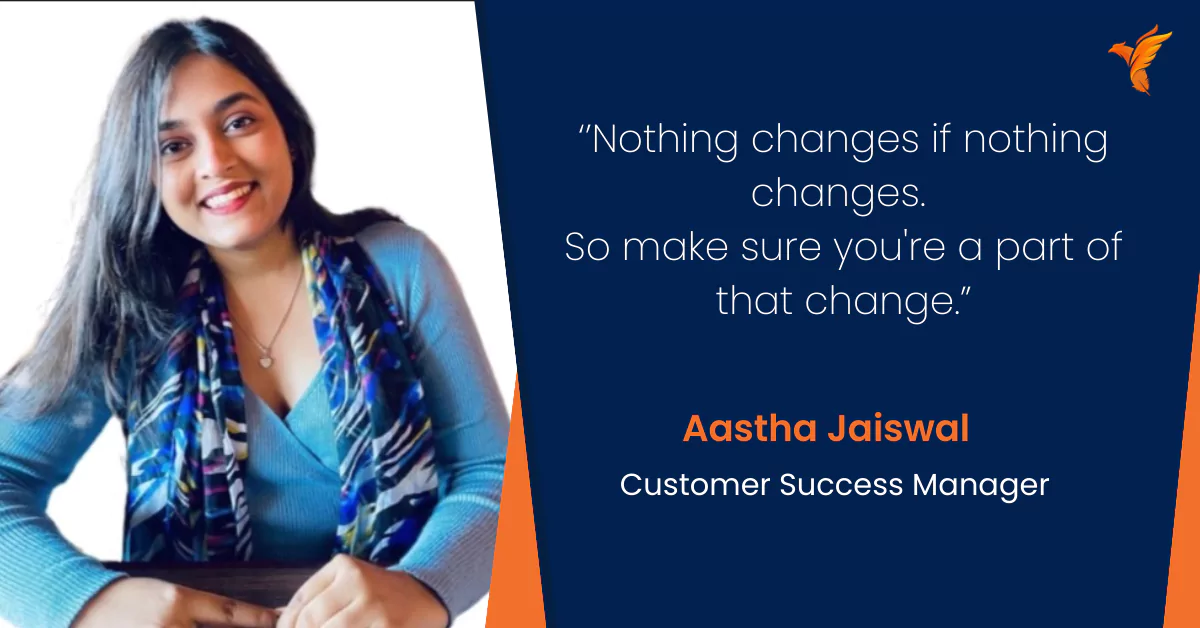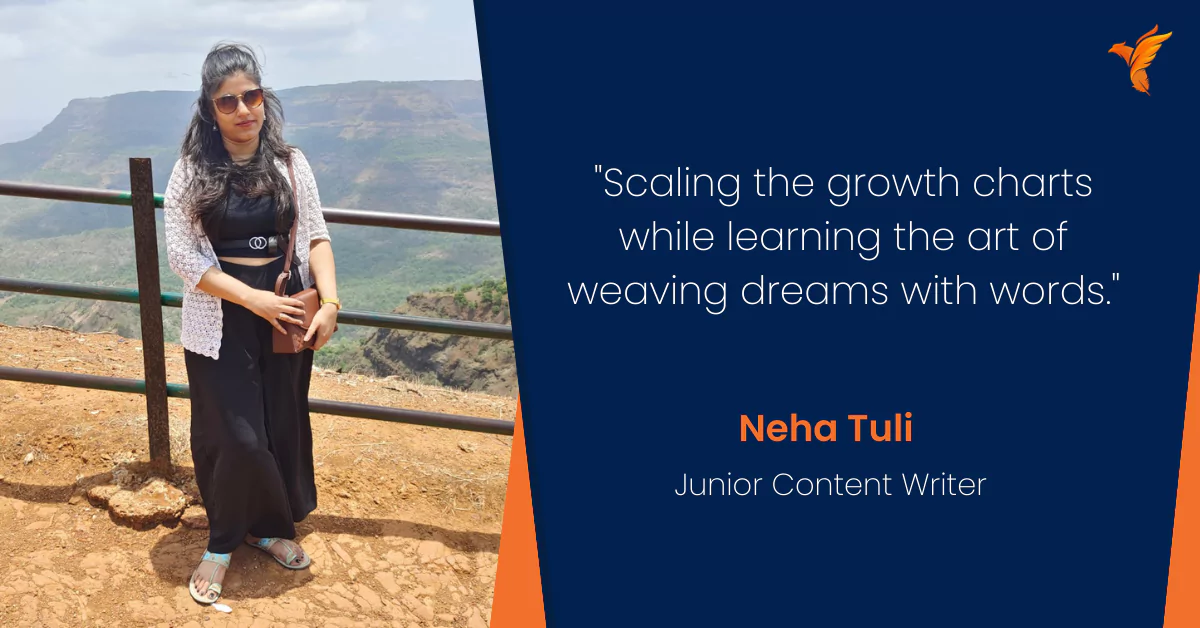Build Your 1-Year Content Strategy Framework in 7 Simple Steps
Author: Team WH
Published On: 27-03-23
Last Updated on: 13-09-23
Estimated reading time: 10 minutes
‘Content marketing is one of the most powerful tools you have at your disposal.’
Be honest: How many times have you heard that statement?
A dozen? A hundred? Maybe, even a thousand.
The thing is, the answer doesn’t matter. What you really should be focusing on is that it’s true.
So, how do you build your content strategy framework that enables you to create content effectively? More importantly, is there a step-by-step process for doing so?
This article explains it all. Let’s get started!
What Exactly Does ‘Content’ Mean Today?
Content doesn’t just refer to an SEO-friendly blog post on your website. Nor is it the 30-second YouTube short you upload every Thursday. It also isn’t the immaculate whitepaper one of your writers just drafted.
Instead, it’s the sum of all parts.
That’s why it’s best to think of ‘content’ as a loaded term. It encompasses everything in your promotional strategies while also defining them. That said, there are four critical elements to any content strategy framework, those being:
- Information
- Context
- Medium
- Form
Putting it together, ‘Content is relevant information positioned into a specific context, with the medium of transmission influencing its form or structure.’
What is Content Strategy?
A content marketing strategy is simply consolidating business goals, aligning them with different content types, and structuring them into a designated editorial calendar to achieve the same.
Let’s understand this better with an example:
Brand X is a media agency rooted in the videogame industry. Their primary work involves game reviews in written or video format. Quite recently, Brand X partnered with a prominent publisher to advertise their latest open-world, role-playing game to a target audience, comprising 15- to 30-year-olds.
The only caveat? Brand X cannot deploy blatant promotional material.
To circumvent this condition, Brand X devises in-depth video guides that explain the game’s complicated mechanics. Alongside that, it creates a listicle that elaborates on the top 10 tips and tricks. Then, the internal team sets up a giveaway content that invites submissions from players.
The first plan is all about visuals. Naturally, the published material will be engaging, informative, and brief to retain viewer attention. Similarly, the listicle will include crisp notes on what players should do to get a head start in the game.
Finally, the giveaway content will leverage social media content to announce the competition or reveal the winners.
Now, as a marketer, you already have an idea of how each format works. You’ve seen video guides before. You’ve read listicles that lay out each aspect of a particular concept. And everyone knows the excitement the word ‘giveaway’ can generate.
That’s what a well-designed content strategy framework is capable of. It informs, engages, excites, and, most importantly, creates product or brand awareness.
7 Simple Tips to Build a Winning Content Strategy Framework
Like it or not, accidental success is a real concept, especially in marketing. To perform consistently, your content plan must incorporate a few specific elements. And a significant chunk of those is all about designing and strategizing an effective outline rather than creating or publishing material.
That said, here are seven tips that anyone can use to build a content marketing plan:
1. Choose Micro Over Macro
Good content generates leads. Great content generates leads and retains them.
The only difference is that the latter is based on defined objectives. Yet, this isn’t as simple as saying, ‘Oh, I want to build brand awareness’.
Instead, ask yourself two questions: When do I deploy a campaign that helps with market visibility, and when do I stop it? After that, what should I focus on?
That will help you segment a broader objective into actionable steps, making it easier to implement. So, say your goal is to build engagement around a new product.
Now, will you prioritize attracting your past clientele, or are you going a different route by channeling your efforts into building online visibility?
In short, every goal or objective has multiple elements attached to it. Identify them, categorize them into distinct phases, and establish those as micro-targets.
2. Pander to the Crowd
The success of a content marketing strategy is entirely dependent on audience reception. That is why you must put in the necessary effort to understand them. So, find out:
- The formats they commonly engage with
- The sites they visit
- The amount of attention they pay to specific content types
- The influence particular formats hold over their decisions
When brought together, these elements will tell you everything you need to know when creating an effective content strategy framework. More importantly, the answers to those questions will inform the necessary changes you need to make, from shifting to top-performing content formats to adjusting your tone of voice.
3. Pick A Playing Field
You have your goals and your target audience at hand. Now, you must choose a time and place.
Often, while researching the platforms your consumers or buyers engage with, you’ll come up with multiple answers. Some may prefer LinkedIn. Others may gravitate towards paid advertisements on Facebook.
The only issue is you can’t justifiably split your resources across several channels without mastering a few first.
So, choose one or two platforms, to begin with. That will anchor and direct your team’s efforts while creating content.
Nonetheless, the best possible option would be to prioritize your own site. Why? Because your website is, quite literally, free real estate. You own all material published on it, control its online persona, and, more importantly, can change it any way you wish.
Still, there’s no wrong choice here. If an external platform works for you, then go for it.
Once that’s done, build a content calendar. Here, you only need to figure out the peak engagement times and how often you post and promote (Yes, those are two separate concepts).
4. Build on Your Strengths
The internet is a black hole. Let that sink in for a moment.
So, it’s best to set yourself up for success right from the get-go. Put simply, you must identify what you are known for. Then, build on that.
For instance, if your brand comes across as having a ‘snarky but lovable’ persona, like Wendy’s, lean into it. Create a content strategy that focuses on publishing regular social media posts which are light-hearted, funny, and sometimes downright sarcastic.
And while you do that, slip in a promotional post in between. It doesn’t have to be something outrageous. Instead, align it with the tone of the previous posts to keep things uniform.
5. Track, Measure & Assess Virtually Everything
All experienced content teams will vouch for the importance of tracking and measuring Key Performance Indicators (KPIs).
So, how do you do that?
You gather feedback. Listen to what your audience is telling you through their average on-page times or social sharing metrics.
There are other factors to consider here as well, including:
- Number of total page views
- Last-interaction social conversions
- Contributed or External traffic conversion
The more in-depth you go, the better your chances are for developing a content strategy framework that establishes you as a leading authority in your niche.
Remember: The more specific you are and the more you focus on your niche, the greater your chances of establishing yourself as an authority in your field.
6. ‘Repurposing’ Will Be Your Friend
Now that you’ve conducted a detailed content audit, you know which formats work well. Here’s where you can get experimental.
Say a blog you posted last month performed exceptionally in SERP rankings. And currently, visual material is peaking in engagement charts. So, what’s stopping you from rephrasing that article into a YouTube script and publishing it online?
Most people may mistake this for laziness. But this isn’t about taking past material and repurposing it indiscriminately. Instead, you must pick the cherries, so to speak, and offer them to the audience who missed out the first time around.
7. Budget Maintenance May Not Be Fun, But It’s Critical
There is no point in building a successful content strategy framework if you can’t sustain it. And this essentially boils down to three specific elements, including the following:
- The designated budget for deploying your content plan
- The deliverables your team is responsible for
- The upkeep of the currently invested tools and the ones you may potentially purchase
This is where it all comes full circle. Think back to the first point about breaking everything into actionable steps.
So, here, you allocate parts of your available budget to high-priority campaigns. Then, segment your teams based on their roles and responsibilities. Got a graphic designer who needs to collaborate with your content creation team? Align them together and give both parties access to each other’s work.
Finally, take care of the tools you use to assess and deploy your material. This covers everything, from subscription renewals to system upgrades.
Learning from the Best of the Best
Since there already is a content strategy example related to the video game industry, let’s stick with that area. This will also highlight how every sector, regardless of how unlikely it may seem, relies on a content strategy framework to promote its product or brand.
On 28th February 2023, Bungie released the latest expansion, titled ‘Lightfall’, to their ongoing live-service game, Destiny 2.
Now, Bungie could have relied on YouTube advertisements to promote its upcoming release. But its marketing team knew better and understood that players would not take kindly to that.
So, Bungie branched out.
First, they updated their weekly blogs to carry snippets of information regarding Lightfall. A hint there, a preview here—Bungie’s writers knew how to keep its dedicated player base engaged leading up to the final release.
Second, the game’s official YouTube channel blew up with a flurry of activity. There were videos from the Concept Art Team, sneak previews of the expansion’s opening cutscene, and copyright-free game tracks that anybody could use.
Then, when everyone seemed to forget about Lightfall, Bungie dropped the trailer for it. That video alone has 2.7 million views at the time of writing this.
Here’s the real kicker: Destiny 2 only had a player count of 96,000 at peak times before the expansion. That number jumped to over 316,000 after Lightfall was released.
To put it simply, Bungie did the following:
- Identified that its veteran players wanted information on the expansion and delivered it through channels that they consistently visit
- Picked YouTube as their primary platform and published related but not outrageously promotional material
- Established a calendar and stuck to it, even when public attention to their game was dwindling
That’s what a guide on how to make a content marketing plan looks like. You identify, ideate, establish, and, finally, deploy.
Final Thoughts
All the tips listed above are broad pointers, meaning they aren’t set in stone. As such, you could switch some of them around. For instance, there’s no harm in analyzing your audience first and letting that inform your business goals.
This flexibility is critical to establishing a successful content strategy framework. After all, the entire point of marketing is to tailor material to trending consumption habits.
Regardless, this path is best navigated with an expert by your side. That’s where WrittenlyHub steps in. Backed by highly qualified writers, graphic designers, and content strategists, our experience in creating relevant and quality content is second to none!
Connect with our team today to develop a content marketing strategy that is perfectly suited to your business goals.
Frequently Asked Questions
1. How often should you update your content strategy framework?
There is no designated timeline for when you need to make changes to your existing outline or plans. Instead, it’s best to analyze the ongoing market trends, examine top-performing content types, and restructure material according to audience preferences.
2. Is it really necessary to build a content strategy framework before ideating your content marketing strategy?
A framework will help guide your broader strategy. For instance, if you were to establish your goals first, it would enable you to segment them into specific micro-targets you need to achieve. Similarly, you can gauge general content performance to alter any strategy that’s not working.
3. What are some general goals you should focus on in the initial phases of building a content marketing plan?
It is essential to align your business objectives with your content marketing strategy. More importantly, always consider the context you deploy your material in. For example, if you wish to simply gain more online visibility, prioritize publishing SEO-friendly blogs and posts. Conversely, if the goal is to promote a new product, consider using multiple platforms to engage old and new consumers.
























































































































